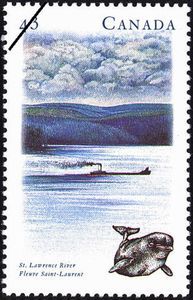Harmful pesticides such as glyphosate, atrazine and neonicotinoids were found in nearly all samples of water from the St. Lawrence River and its tributaries, with many samples containing levels higher than the guideline to protect aquatic life, according to new research. The St. Lawrence River is one of North America's major water systems—draining a 500,000 square mile watershed that contains the Great Lakes. "The freshwater inputs of the St. Lawrence provide a source of drinking water production for more than half of the population of the province of Quebec," the authors wrote.
The study, published in Environmental Pollution, found that 99 percent of 68 water samples collected from the large water system contained at least one of the 10 pesticides researchers tested for and 31 percent of the samples contained neonicotinoids at levels higher than Canada allows. "I wasn't that surprised to find that [the pesticides] are ubiquitous, it's difficult to find water not covered with them," Sébastien Sauvé, senior author of the study, researcher and Vice Dean at the Faculty of Arts and Science at the Université de Montréal, told EHN. "What did surprise me was the number of times the environmental guidelines were exceeded."
Neonicotinoids—insecticides made from nicotine widely used on corn, cotton, sorghum, soybeans and on some other fruits and vegetables—are thought to be at least partially behind bee declines in recent years and also have been linked to widespread impacts on aquatic insects and invertebrates. Scientists in 2016 concluded "the decline of many populations of invertebrates, due mostly to the widespread presence of waterborne residues and the extreme chronic toxicity of neonicotinoids, is affecting the structure and function of aquatic ecosystems."
Source: Environmental Health News, May 1, 2019
https://www.ehn.org/pesticides-are-all-over-the-st-lawrence-river-many-…

- Login om te reageren
